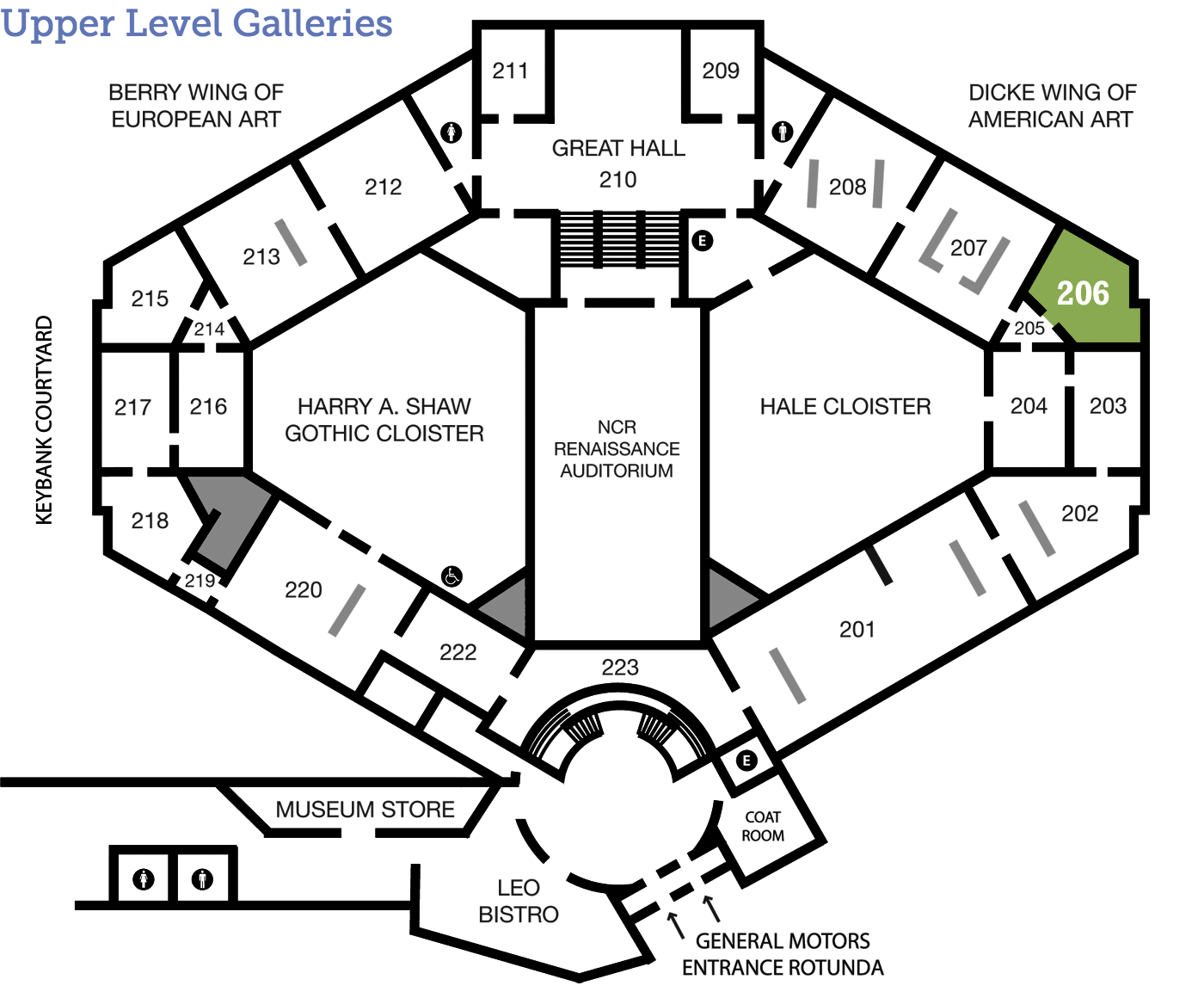
Childe Hassam
Early Morning Calm
(1859–1935)
American 1901 Oil on canvas 25 x 30 inches Gift of Mrs. Harrie G. Carnell 1942.3
A Sense of Place
Do you have a favorite place to relax and refresh? What are the sights, sounds, and smells there? For years, Childe Hassam went to the same place each summer, which inspired many of his paintings.
A Day in the Life
An Island Retreat
Early Morning Calm depicts the coastline of Appledore Island in the Isles of Shoals, a group of islands six miles off the coast of Maine and New Hampshire. Hassam first went there in the mid-1880s because of the informal artist’s salon hosted by the poet Celia Laighton Thaxter (see “Arts Intersected”), and he returned most summers until about 1916. In fact, ten percent of Hassam’s artwork depicts the Isles of Shoals. What does Appledore Island look like today and how does it compare to the way Hassam captures it in paint? See for yourself in the following video produced by the North Carolina Museum of Art.
In the Footsteps of Childe Hassam: GoPro Footage from Appledore Island from The North Carolina Museum of Art on Vimeo.
Further reading: David Park Curry, Childe Hassam: An Island Garden Revisited (Denver: The Denver Art Museum, 1990).
Tools and Techniques
Color, Light, and Space
As you look at this painting, do you get an impression of expansive space shimmering with light? What compositional tools did Hassam use to create this effect? Learn more in the following audio clip with Will South, Chief Curator at The DAI from 2009–2011.
Transcript:
Childe Hassam was one of many nineteenth-century Americans who became excited about Impressionism, which, at that time, was modern painting. It was modern because Impressionists used many individual strokes of bright color to make an image, as opposed to creating a smooth, polished, almost photographic paint surface. In this painting, Early Morning Calm, you see how the numerous daubs of paint add up to a shimmering surface that seems to be reacting to outdoor light. Impressionists, in fact, painted out-of-doors to achieve these effects. Childe Hassam painted still life and figures, but he always returned to landscape because in addition to the intense outdoor light and color he could also paint atmosphere. That means he could interpret light and color close-up, as seen here in the rocky shore, as well as how light and color change over distance, past the horizon line. In Early Morning Calm, Childe Hassam captures a sense of great space, making an otherwise simple composition feel open and expansive.
Behind the Scenes
Look Closer
Just for Kids
Create!
When Childe Hassam completed this painting, he dedicated it to his friend Celia Laighton Thaxter. She wrote poetry and lived near the ocean.
Create your own acrostic poem inspired by this painting. An acrostic poem is a poem that spells out a word or phrase from the first letter in a word. Base your acrostic poem on the word Seaside. Look at the painting and see if you can find words that will spell out Seaside.
Signs & Symbols
Dig Deeper
Arts Intersected
A Sea of Words
Hassam dedicated this painting to the poet and journalist Celia Laighton Thaxter (1835–1894). She had a house with a magnificent garden on Appledore Island off the Maine and New Hampshire coast, which often served as an informal salon for artists. Hassam did numerous paintings and pastel drawings of the garden from 1889–1894, as well as the illustrations for Thaxter’s book An Island Garden (1894).
Early Morning Calm provides a quick look, or impression, of an ocean scene. So does Thaxter’s poem, “At Dawn.” Compare the sensations described in the poem with what you see in the painting and consider how the words may enrich the image and vice versa.
"At Dawn"
Early this morning waking, I heard the sandpipers call, And the sea on the shore was breaking With a dreamy rise and fall. The dawn that was softly blushing Touched cloud and wave with rose, And the sails in the west were flushing, No breeze stirred their repose. What tone in the water’s falling Had reached me while I dreamed? What sound in the wild birds’ calling Like a heavenly greeting seemed? What meant the delicate splendor That brightened the conscious morn With a radiance fresh and tender Crowning the day newborn? All nature’s musical voices Whispered, “Awake and see! Awake, for the day rejoices!” What news had the morn for me? Then I remembered the blessing So sweet, O friend, so near! The joy beyond all expressing,—To-day you would be here.
In Celia Thaxter, The Poems of Celia Thaxter (Boston: Houghton, Mifflin and Company, 1896).
The Sculpture Speaks
Did You Know?
Expert Opinion
Look Around
About the Artist
Talk Back
What is your impression?
Hassam studied painting in France from 1886–1889, where he was strongly influenced by French Impressionist painters, such as Claude Monet (see “Tools & Techniques”). A painting by Monet in The DAI’s collection is Waterlilies in Gallery 212, completed about the same time as Early Morning Calm. How does the composition and sensations of place compare to Hassam’s painting?
Hassam shows where the land meets the water and uses naturalistic colors, while Monet has no borders and plays with the reflection of light, pushing towards abstraction. This reflects the broader differences between American and French Impressionism. American Impressionist painters used a more naturalistic palette, their brushwork was not as loose, and they depicted pastoral scenes, in contrast to French Impressionists who favored the urban environment.

Claude Monet (French, 1840–1926), Waterlilies, 1903, oil on canvas. Gift of Mr. Joseph Rubin, 1953.11

